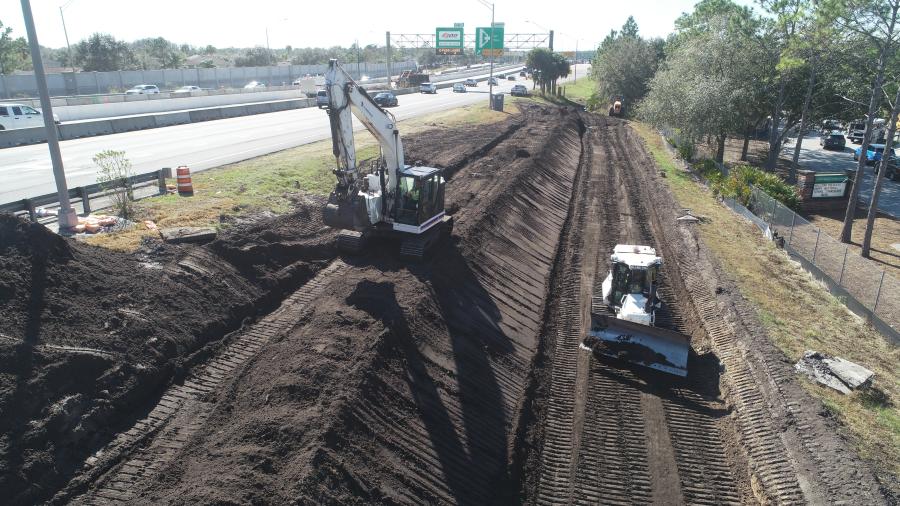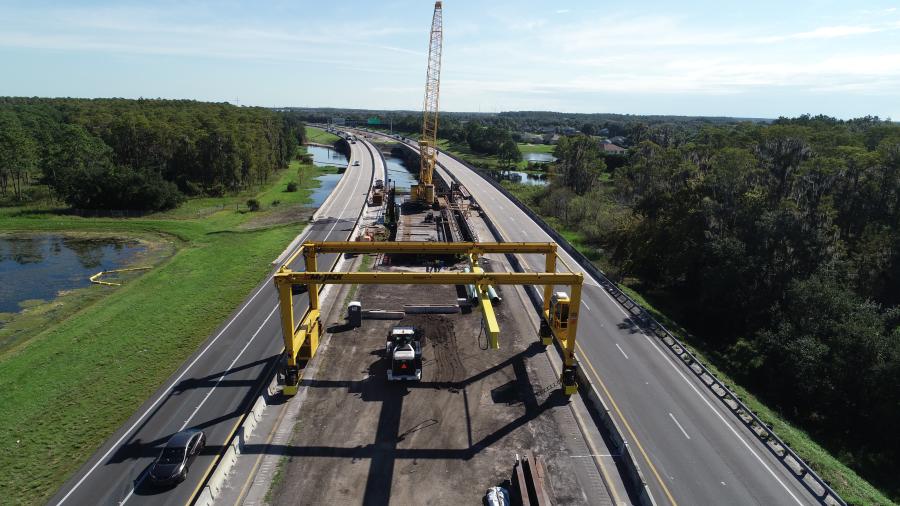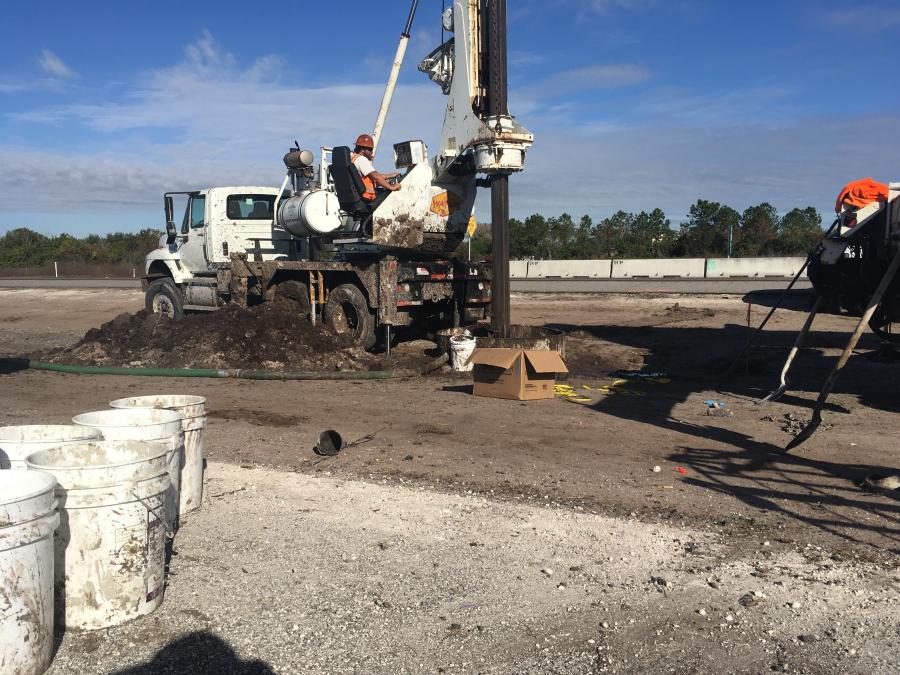A crawler crane used for pile driving on the $470.5 million Central Florida GreeneWay project.
One of central Florida's busiest expressways is undergoing capacity improvements to better traffic flow in the area. The southern corridor of SR 417 (Central Florida GreeneWay) will increase from four to six lanes as part of Central Florida Expressway Authority's (CFX) State Road 417 Corridor Capacity Improvements Project from International Drive to State Road 528. Construction began early 2021 and has a scheduled end date of late 2023.
This will include installation of sound walls as needed and widening of median shoulders to temporarily accommodate any additional traffic as in the case of emergency responses, hurricane evacuations or traffic accidents. SR 417 also is the first CFX expressway to add open-road tolling gantries to all its mainline toll plazas, which allows travelers with electronic toll collection transponders to pay tolls while traveling at the posted highway speed.
"There have been some major challenges on the project involving unanticipated long lead times and COVID-related manpower issues, but the project teams have been working to counteract those challenges," said Shemir Wiles, senior communications manager of Quest, CFX's public involvement firm. "For example, with the longer lead time for materials, they're trying to order as many materials as they can early on to avoid any delays. The contractors have been doing a great job of adjusting their schedules to avoid any delays. If there's an area of the project that they can work on where they have the materials and the crew, they'll shift their schedule to concentrate in that area."
To reduce any impacts or interruptions to traffic in the area, the project has been divided into five segments along the 21-mi. route. These include construction from International Drive to John Young Parkway, from the parkway to Landstar Boulevard, from the boulevard to Boggy Creek Road, from there to Narcoossee Road, and the remainder of the route until SR 528 (Martin B. Andersen Beachline Expressway).
The project cost comes in at $470.5 million with monies sourced from toll-generated funds as part of CFX's 125-mi. system. While each segment is at different phases of construction, the project is on track for completion by the estimated date. With five different segments in the works, there are a few different contractors that are working on this project. Segment one has Hubbard Construction Company; segment two has Prince Contracting; segments three and five are with SACYR Engineering and Infrastructures; and segment four with Ranger Construction.

Several subcontractors also are involved in the work on SR 417. All have been brought in to provide a specialized service on the project. Some of these subcontractors include: Chinchor Electric, United Signs & Signals and Conti, all major subcontractors that are providing ITS, signalization and lighting work; Central Florida Underground Inc. for jack and bore installation of conduit; Concrete Impressions of Florida Inc. for furnishing and installing precast noise wall; Sitescope Inc. for videoing of existing drainage system; J. Mori Painting Inc. for painting of steel bridge beams and overhead sign structures; Reliant Underground Inc. for installation of underground conduit; Qualis Concrete Inc. and Gosalia Concrete Constructors Inc. for installation of concrete median barrier wall; and Traffic Control Products of Florida Inc. for installation of temporary barrier wall.
Wiles shared that depending on the job at hand, there are several crew members engaged in multiple tasks contributing to each segment's completion. Most of the work has been limited to nighttime construction, some lane and ramp closures and some daytime pile driving operations. For the safety of motorists and work crews, speed limits are enforced during construction and speeding fines doubled in work zones when workers are present.
Safety of the workers and surrounding traffic is of utmost importance given that this is a high-traffic area. Pacing vehicles are used behind some of the slower moving trucks to guide them into the work zone safely and move travelers on the 417 into other lanes. Specific safety measures include daily coordination between the segments regarding lane closures, ramp closures and detours to ensure everyone's operations are compatible and to minimize any impacts to motorists.
Other measures include routine coordination between all adjacent projects on the transitions between projects to ensure all safety features are present and correctly installed; law enforcement presence during all lane and/or ramp closures; consistent requirements for ingress and egress of construction traffic from and onto active travel lanes; and construction of temporary asphalt on the outside shoulders to provide additional width for traffic during the inside widening phase.
Workforce on the project includes pile driving and bridge crews; asphalt paving crews; drainage crews; and crews working on the noise walls installed as part of the project. Sound analysis was performed prior to the start of the project to determine which locations would receive noise walls to reduce noise impacts on the surrounding areas.
"On segments three and five, the contractor is using a brand-new hydraulic pile hammer that's mounted on the back of a backhoe to do pile driving in bridge areas that have a low overhead clearance," said Wiles. "We have a couple of areas on the project where they're doing bridge work that have electrical lines that go overhead. Instead of using the traditional pile hammer that's usually very tall, because of overhead clearance issues, they brought in this equipment specifically for this project."
Other construction equipment involved includes concrete mixer trucks, cranes, bulldozers, motor graters, asphalt milling machines, dump trucks, compactors and more. Materials include steel H-Piles for bridge foundations, asphalt, concrete beams and several electronic components for the ITS work.
"The way that central Florida is growing, this project will definitely help not only people who live near the 417 but also our customers who travel it regularly," said Wiles. "This will help them immensely with improving the traffic flow safely in this area." CEG
Today's top stories



























